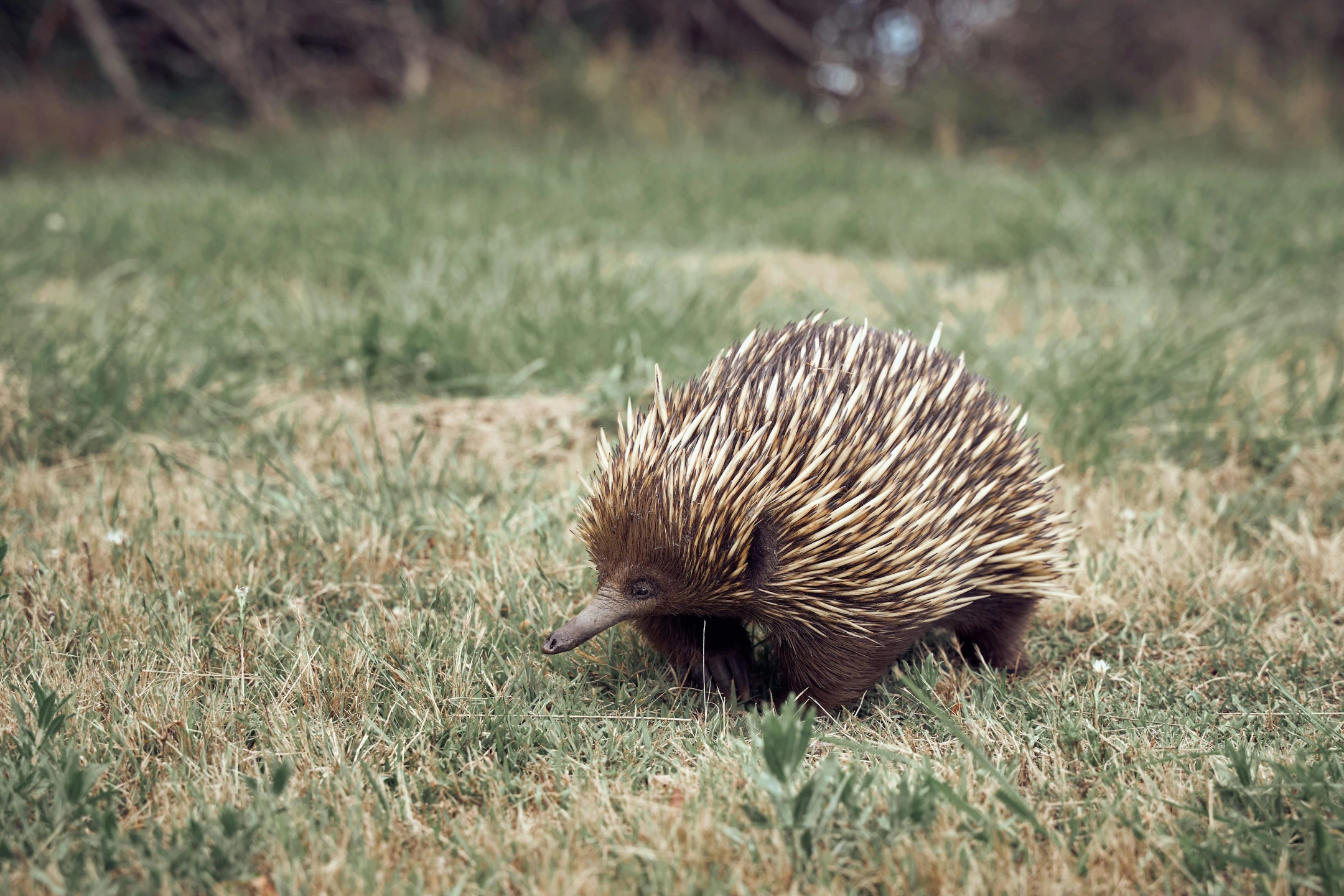
Echidna Biology 101: Your Complete Guide to Tracks, Diggings, Behaviour and Threats
Australia's iconic short-beaked echidna might be our most widespread native mammal, but there's still so much we don't know about these extraordinary egg-laying creatures. Dr Kate Dutton-Regester, wildlife scientist at UQ's School of Veterinary Science and Wildlife Queensland's EchidnaWatch Project Officer, is leading groundbreaking research to uncover echidna secrets through her "Building a Baseline" project.
Echidna Tracks: Following the Trail
Echidna tracks tell stories of adaptation and survival across diverse Australian landscapes.
Track characteristics:
Four-toed prints with prominent claw marks
Distinctive waddle stride pattern
Belly drag scuff marks
Directional changes following scent trails
These unique monotremes have a characteristic "reptilian walk" creating recognisable trail patterns. Following tracks often leads to their hideouts in sand or soil where they shelter during hot days, as they're poor thermo-regulators above 35°C.
Echidna Diggings: Nature's Soil Engineers
Dr Dutton-Regester's innovative "Echidna Digs Project" reveals these creatures as phenomenal ecosystem engineers, distinguishing their diggings from similar bandicoot foraging marks.
Digging characteristics:
Cone-shaped excavations hunting for ants and termites
Average 50±25mm depth, 160±61mm length
Circular shallow pits and bulldozing tracks
Massive ecological impact: Research shows 298 diggings per hectare, with echidnas turning over 1.23 tonnes of soil per hectare annually. A single individual moves seven tons of soil yearly, spending 12% of their time digging.
Echidna Faeces: Soil-Rich Signatures
Echidna droppings are 7cm long, cylindrical, and composed largely of dirt and ant-hill material. Their 18cm sticky tongues accidentally consume soil while capturing prey, making scats valuable for research.
Dr Dutton-Regester's team has collected over 400 scats Australia-wide for molecular analysis of diet, gut health, and reproductive cycles - pioneering research using faecal hormone metabolites as management tools.
Echidna Behaviour: Solitary Specialists
Daily patterns: Most active at 16-20°C, sheltering in burrows and rock crevices during extreme weather.
Foraging: Extremely reliant on their snout, detecting prey through smell or electrical impulses. They break open logs and termite mounds with powerful forearms.
Breeding: Mid-winter "trains" see females followed by up to 10 males for weeks. Mating only occurs when females lower their spines.
Defence: Roll into balls using enormous skin muscles, presenting defensive spine arrays.
Territory: Solitary with 40-60 hectare overlapping home ranges in most Australian regions.
Major Threats
Vehicle strikes - Leading cause of urban/suburban mortality due to slow movement and defensive rolling behaviour.
Habitat fragmentation - Urban development reduces foraging areas and creates movement barriers.
Introduced predators - Cats and foxes target young echidnas; dingoes attack by rolling them over.
Parasitic infections - Fatal tapeworm infections from sharing water with infected domestic and wild animals.
Climate change - Die from heat apoplexy above 35°C, vulnerable to extreme weather.
Invasive species - Dr Dutton-Regester investigates whether echidnas avoid fire ant infested areas.
Conservation Through Community Science
Despite their distinctive appearance, echidnas inhabit myriad environments making them challenging to study. Dr Dutton-Regester's community-driven approach revolutionises echidna research.
The EchidnaCSI app engaged 11,000 participants submitting Australia-wide sightings, revealing echidna activity in every state and territory, including major cities.
How to help:
Photograph echidna diggings with measurements
Report sightings through citizen science apps
Contribute to seasonal scat collection
Support camera trapping research
Dr Dutton-Regester's current projects include training detection dogs to locate echidnas and monitor reproductive cycles, plus camera trapping across South East Queensland to understand activity patterns and climate responses.
Why This Matters
Short-beaked echidnas are Australia's most widespread native mammal, yet we lack crucial data on abundance, behaviour, and health. As Dr Dutton-Regester emphasises: "widespread doesn't mean secure, and assumptions are no substitute for real data."
These living evolutionary links descended from platypus-like ancestors 20-50 million years ago. With the largest prefrontal cortex relative to body size of any mammal (50% vs 29% for humans), they possess sophisticated cognitive abilities we're only beginning to understand.
Through pioneering research and community engagement, we're building knowledge to ensure these extraordinary monotremes continue thriving across Australian landscapes.
Join echidna conservation efforts through Dr Kate Dutton-Regester's research or Wildlife Queensland's EchidnaWatch program.
Keywords: echidna biology, short-beaked echidna tracks, echidna diggings, Australian wildlife, monotreme research, Dr Kate Dutton-Regester, echidna conservation